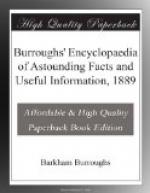LEGIBILITY.
Children, in learning to write, are apt to sacrifice all other good qualities of beauty, regularity and grace, for the quality of legibility, or plainness. With some older persons this legibility is considered of very little consequence, and is obscured by all manner of meaningless flourishes, in which the writer takes pride. In the estimation of the business man, writing is injured by shades and flourishes. The demand of this practical time is a plain, regular style that can be written rapidly, and read at a glance.
[Illustration]
FINISH.
By a careless habit, which many persons allow themselves to fall into, they omit to attend to the little things in writing. Good penmanship consists in attention to small details, each letter and word correctly formed, makes the beautiful page. By inattention to the finish of one letter, or part of a letter of a word, oftentimes the word is mistaken for another, and the entire meaning changed. Particular attention should be devoted to the finish of some of the small letters, such as the dotting of the i, or crossing of the t. Blending the lines which form a loop, often causes the letter to become a stem, similar to the t or d, or an e to become an i. In many of the capital letters, the want of attention to the finish of the letter converts it into another or destroys its identity, such, for instance, as the small cross on the capital F, which, if left off, makes the letter a T. The W often becomes an M, or vice versa, and the I a J. Mistakes in this regard are more the result of carelessness and inattention than anything else. By careful practice a person will acquire a settled habit of giving a perfection to each letter and word, and then it is no longer a task, but is performed naturally and almost involuntarily, while the difference in the appearance of the written page, as well as the exactness and certainty of the meaning conveyed, may be incalculably great.
While practicing penmanship, or while endeavoring to correct a careless habit in writing, the mind must be upon the work in hand, and not be allowed to wander into fields of thought or imagination; by thus confining the attention, any defect or imperfection in the formation of letters may be soon mastered or corrected.
[Illustration: Position of the Hand and Pen.]




